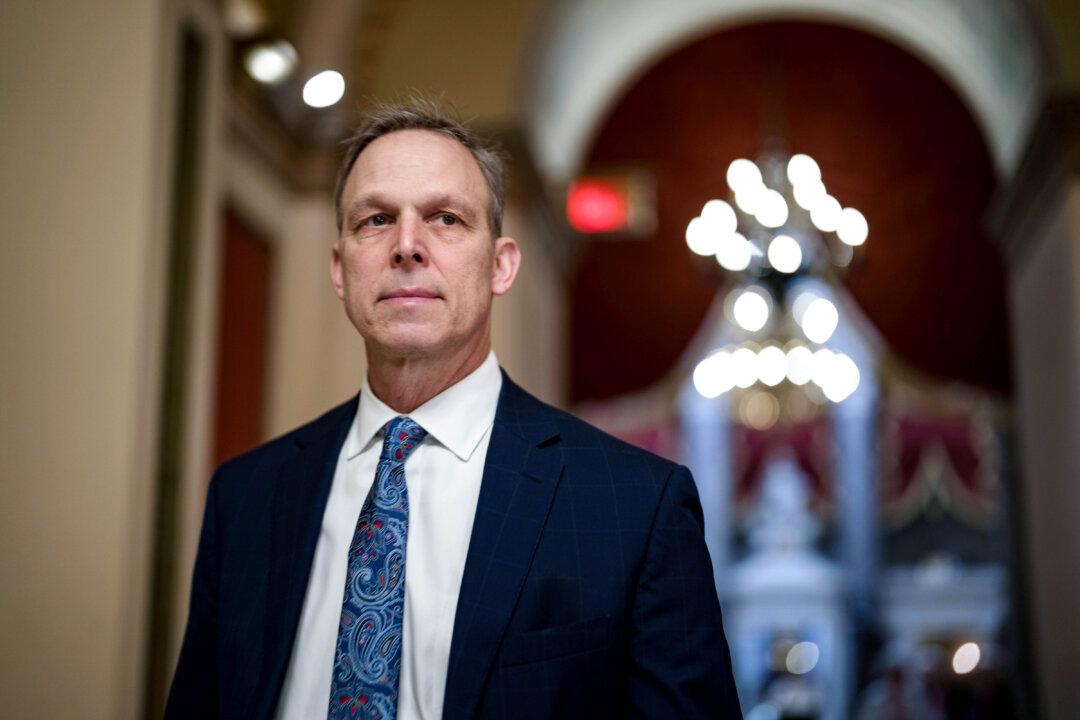The closure of some school buildings over concrete with collapsing risks is not a return to pandemic-style lockdowns, the education secretary said on Sunday.
The Department for Education (DfE) has told 104 schools and colleges to keep all or part of their buildings shut next week because they contain reinforced autoclaved aerated concrete (RAAC), a type of lightweight concrete used between the 1950s and the mid-1990s, after a RAAC beam collapsed last week.
Writing in The Sun on Sunday, Education Secretary Gillian Keegan said there was “no choice” other than to make closures after a “handful of cases” where RAAC had failed, and sought to assure parents that the school closure is not a return to “the dark days of school lockdowns.”
Guidance issued by the Institute for structural engineers [IStructE] only requires a building containing RAAC to be taken out of use for urgent remedial work when it’s presenting critical risks.
However, the DfE contacted 104 schools on Thursday telling them to shut down buildings with RAAC after a RAAC beam which was showing no signs of “critical risk” suddenly collapsed recently.
Another 52 schools are known to have RAACs but they had already taken protective steps this year.
Defending the decision, Ms. Keegan wrote, “We all have to make difficult decisions in life and responsible government is about getting them right. That means looking at evidence and acting, even when the trade-offs are significant.
“That’s the position I faced when new evidence was presented to me indicating concrete which forms part of certain school buildings was no longer safe.”

Ms. Keegan said she understands the anxiety of parents who have only recently gone through disruptions during the COVID-19 pandemic and that this isn’t a “return to extended home learning.”
For the 52 schools that had taken mitigation measures to tackle the RAAC risks, home learning had only been required “for days, not weeks,” she said, and the “vast majority” of the 22,500 schools in England are not affected.
“A minority may need to move some or all of their children, with a short period of off-site learning or, as a last resort, remote learning.
“We’re supporting each of those schools with a case worker, and funding to cover immediate measures like temporary classrooms, to keep face-to-face education going,” she said.
In guidance published on Thursday, the DfE recommended using nearby schools, community centres, or an “empty local office building” for the “first few weeks” while structural supports are installed to mitigate the risk of collapse.
Schools were told moving to remote education should be considered only as a “last resort and for a short period.”
In a statement on Saturday, the DfE said: “We are incredibly grateful to school and college leaders for their work with us at pace to make sure that where children are affected, disruption is kept to a minimum, and in the even rarer cases where remote learning is required, it is for a matter of days not weeks.”
Commenting on Labour’s call for the publication of the list of schools affected, Ms. Keegan said the government will do so “when parents have been informed and schools given time to respond.”
Labour shadow education secretary Bridget Phillipson said the government needs to “come clean” about the problem RAAC in schools.
“Ministers need to come clean, be upfront, and be honest with parents about what we’re facing right now,” she told Sky News’s “Sunday Morning With Trevor Phillips” programme.
“I think we need to be upfront, have that full list, and be absolutely clear about what’s going on and if we need further surveys to take place in order to determine the full scale of what’s happened then so be it.”
Scottish Education Minister Jenny Gilruth confirmed on Friday that RAAC is in 35 of Scotland’s 2,500 schools but there’s no plan to shut them all down.
Ms. Gilruth said the local authorities had sought to reassure her that they were “acting to put in place mitigations,” including a number of local authorities that had closed classrooms.







